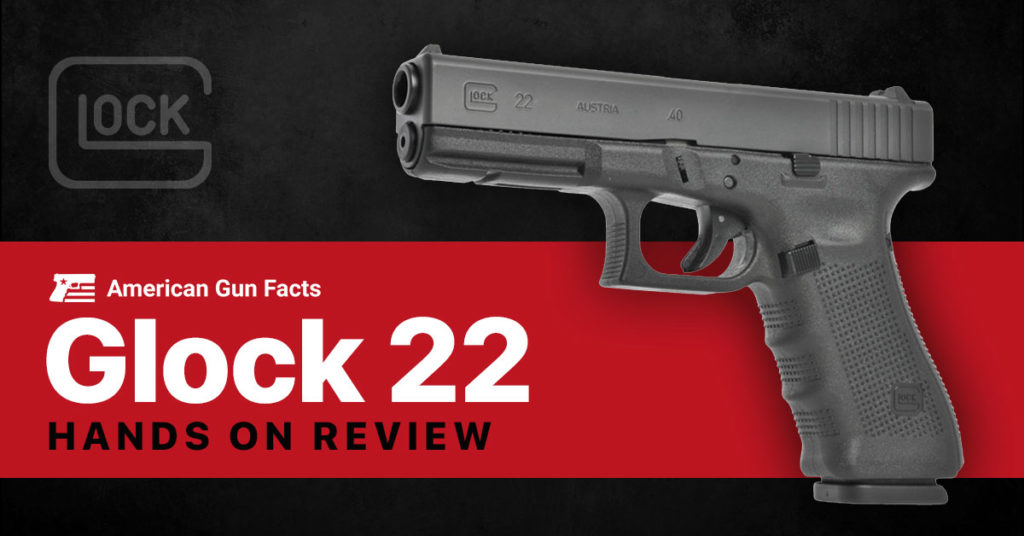The Glock model 22 is an extremely popular duty weapon for law enforcement. The Glock 22 was introduced in 1990, and it rapidly took over as the favorite for law enforcement agencies across the United States. While many agencies have begun migrating to different platforms, the G22 is still very prevalent.
Background of the Glock 22
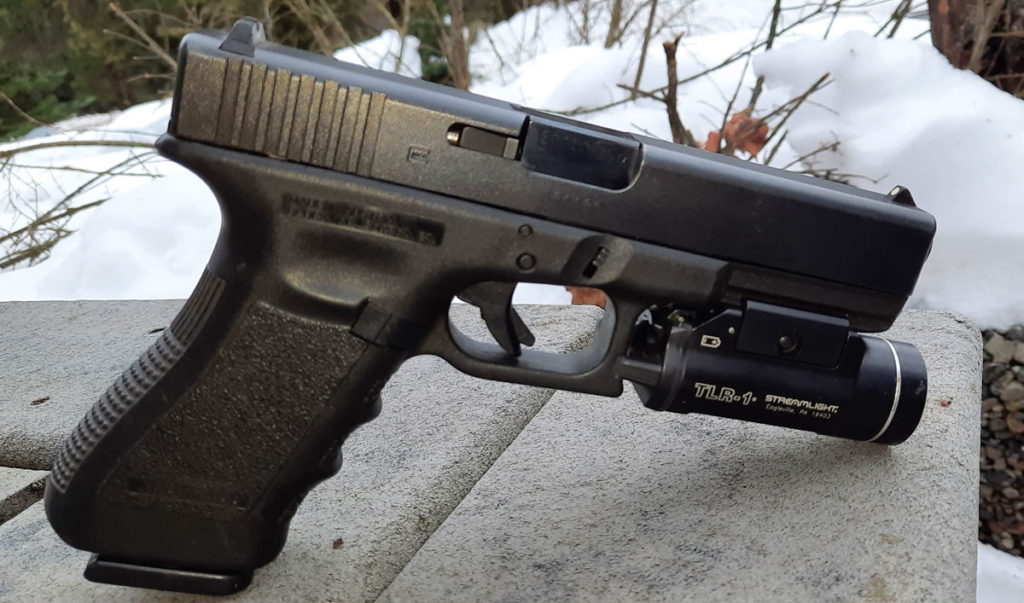
Check Price at:
Chambered in .40 S&W, the idea was to split the difference between the 9mm and the .45 ACP. Ever since I can remember, .45 ACP enthusiasts and 9mm enthusiasts have debated back and forth over which caliber is best. The former has always argued that the heavy bullet of the .45 ACP has the advantage of outstanding knock-down power, while the latter cites the velocity and magazine capacity of the 9mm as the better choice.
With a seemingly endless combination of bullet weights and styles, ballistic coefficients, powder charges, there is a wide range of ballistic information for every caliber. To keep things simple for the purpose of this article, the chart listed below consists of just a ballpark average (based on Black Hills ammunition) for the three calibers mentioned:
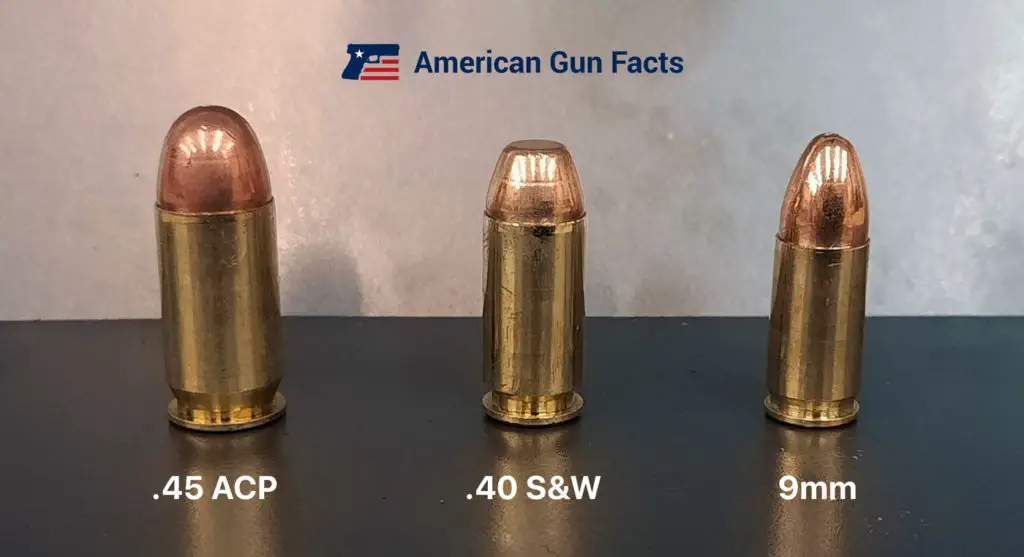
| Caliber | Avg Muzzle Velocity (fps) | Avg Muzzle Energy (ft-lb) |
| .45 ACP | 930 fps | 393 ft-lbs |
| .40 S&W | 1100 fps | 422 ft-lbs |
| 9mm | 1187 fps | 372 ft-lbs |
Specs
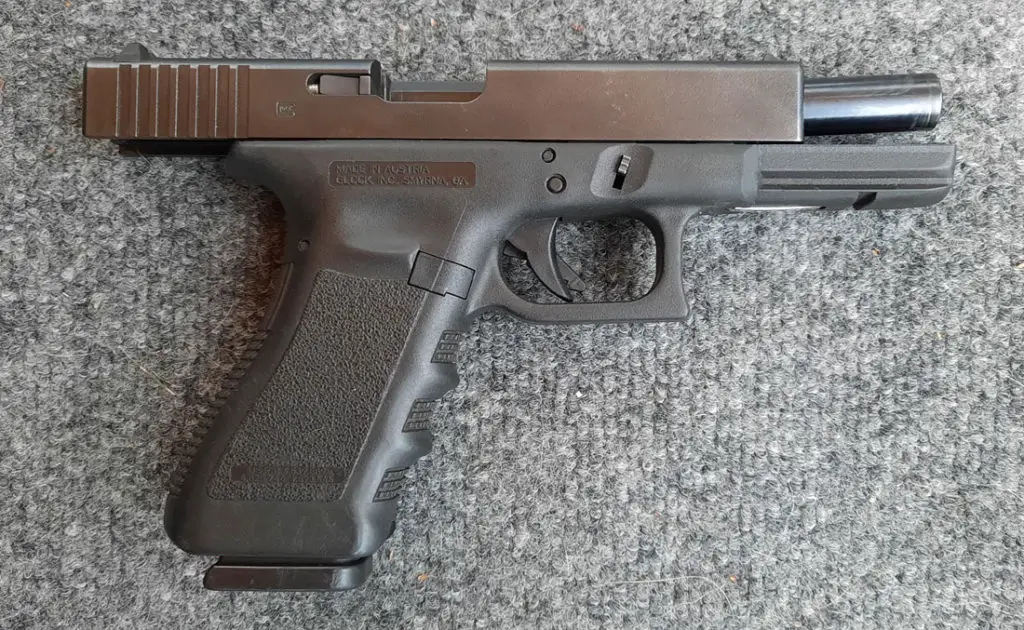
Getting back on topic, Glock has several pistols to choose from in all three of these calibers (and more). In this review, I will be discussing my experience with the Glock model 22 (Gen 3) chambered in .40 S&W. The model 22 is a full sized semi-automatic pistol with a polymer frame. Other relevant specifications are listed below:
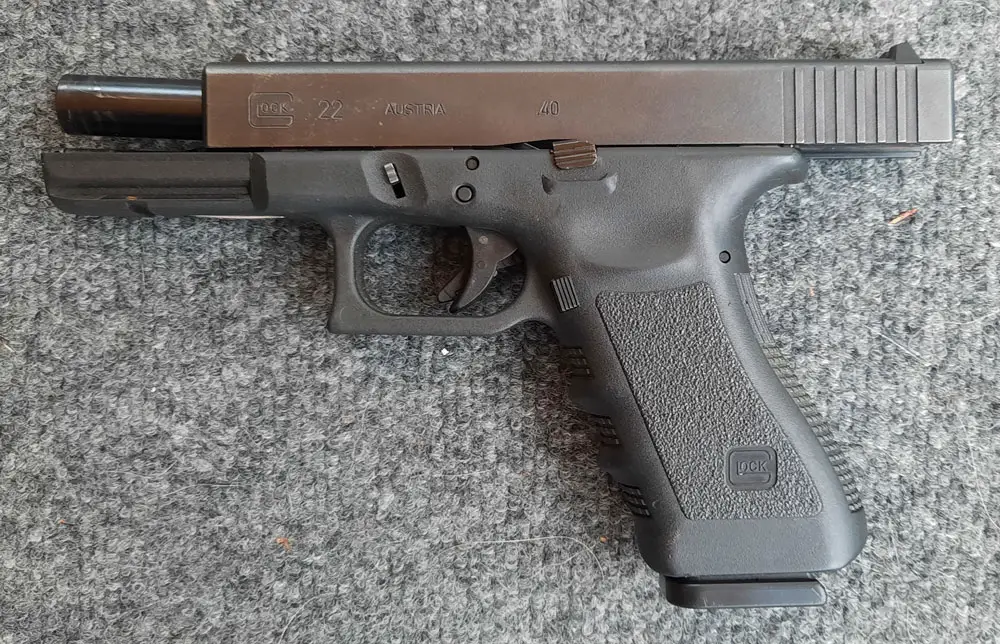
- Caliber: .40 S&W
- Magazine Capacity: 15
- Barrel Length: 4.49”
- Trigger Pull Weight: 5.5 lbs.
- Overall Length: 8.03”
- Height: 5.43”
- Width: 1.18”
- Weight: 25.59 oz (unloaded) and 34.39 oz (loaded)
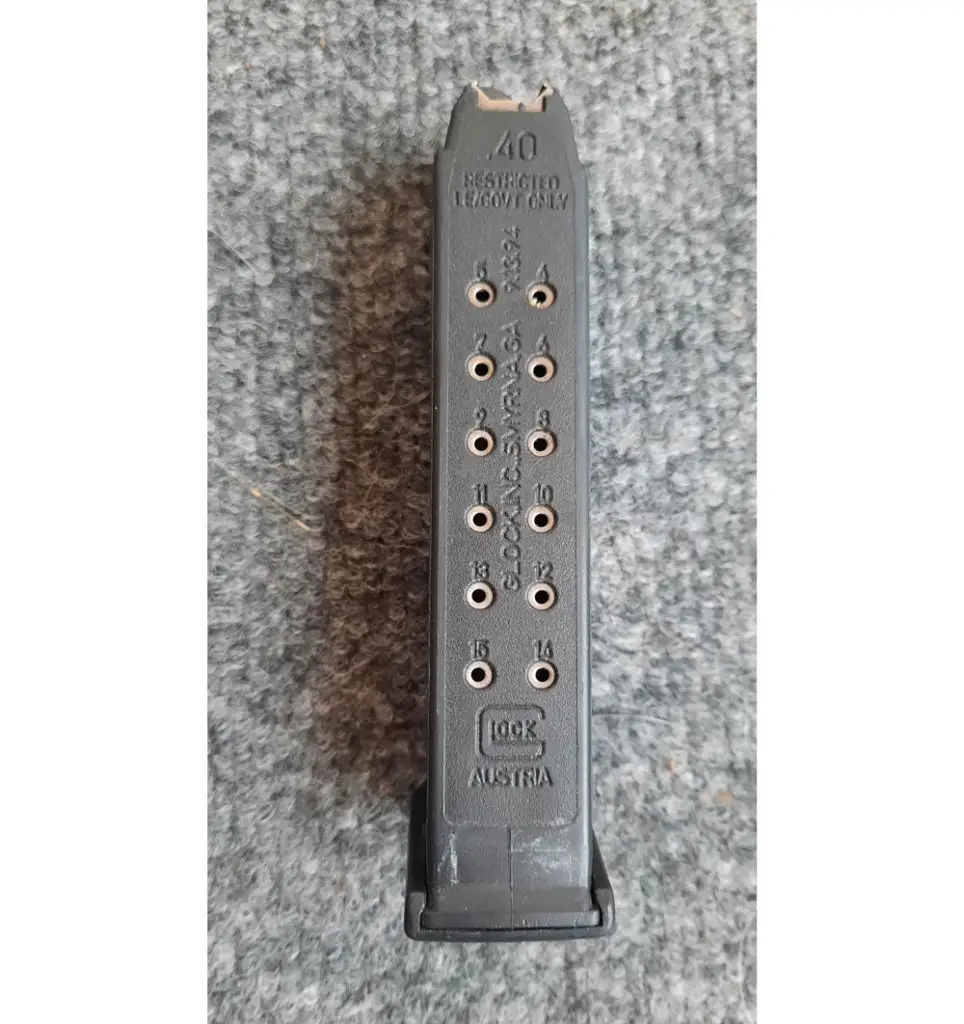
Glock 22 Generation Differences
Glock 22 Gen 3 has an accessory rail under the barrel, finger grooves molded into the grip, and a thumb rest indent on both sides of the grip.
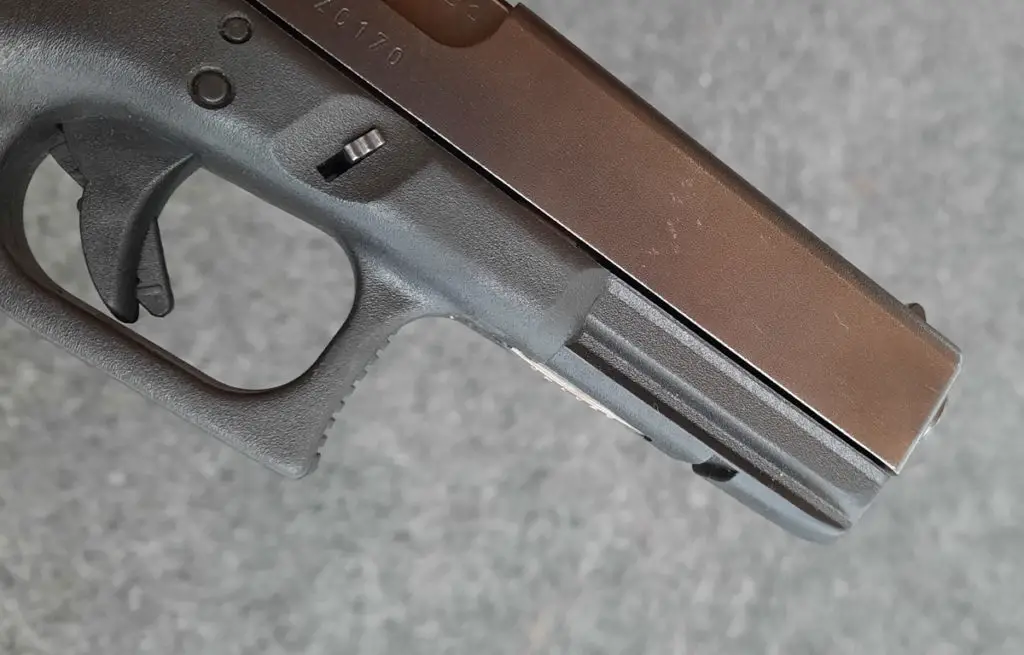
Glock 22 Gen 4 has the same features as the gen 3, but also has a removable modular backstrap system that allows the shooter to adjust the size of the grip.
Glock 22 Gen 5 includes an ambidextrous slide release and a flared magazine well. The finger grooves were removed from the gen 5, leaving it with a flat front strap.
Cost
The cost of a new Glock 22 varies a bit depending on what generation (i.e., 3, 4 or 5) you are looking to purchase.
| Generation | Cost |
| 3rd Generation | ~ $500 |
| 4th Generation | ~ $550 |
| 5th Generation | ~ $600 |
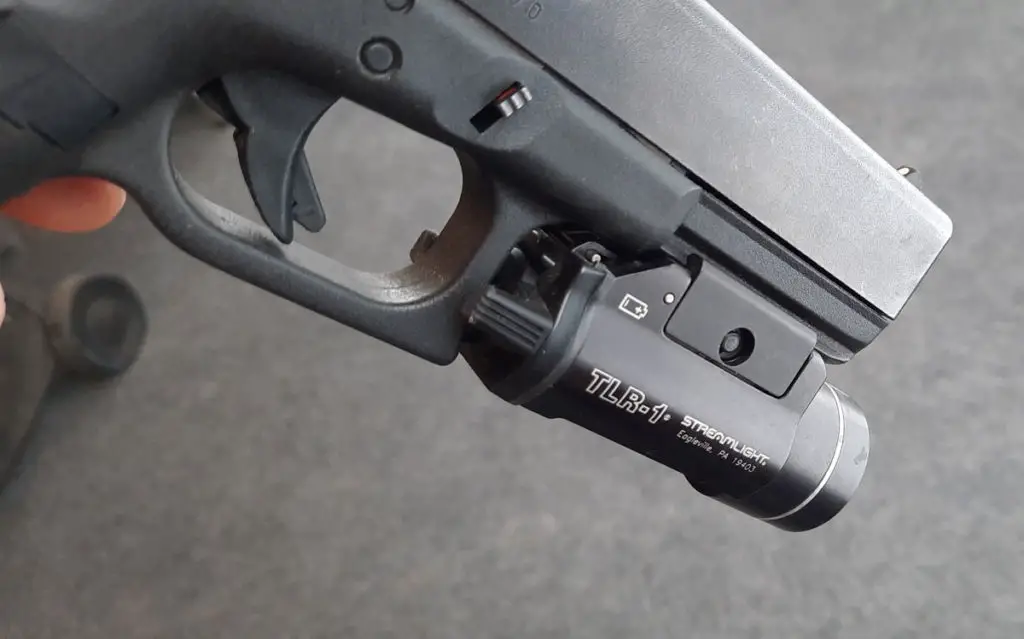
The Feel of the Glock 22
For a full-sized frame pistol, the Glock 22 feels relatively light weight due to the polymer frame. Many steel framed pistols weigh significantly more unloaded than the Glock weighs fully loaded. I imagine this is one of the appealing features for law enforcement. Whether the Glock is being carried concealed or on a duty belt, lighter is generally better. I have carried mine in both capacities, and have noticed less fatigue at the end of the day when compared to other full framed pistols. A pound or two can make a surprising difference after 10 or 12 hours.
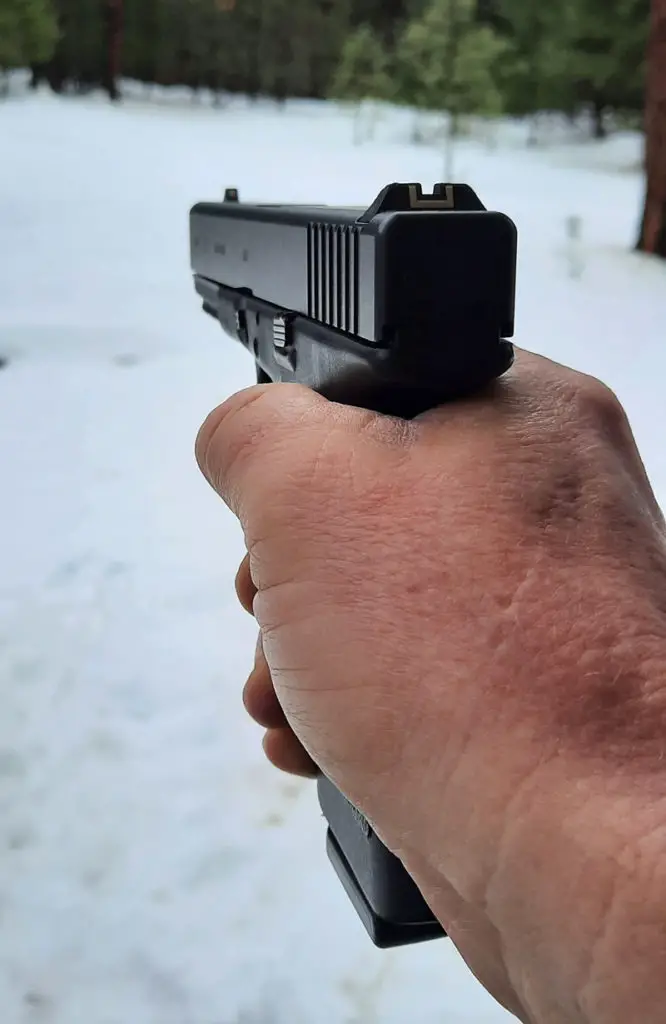
Additionally, and probably more specific to law enforcement, the weight makes a huge difference if/when your duty weapon needs to be held at the low or high ready position for an extended period of time.
Whether it’s your preference or not, it would be hard for anyone to deny the Glock is a bit on the boxy side. For me personally, the roundness of the exposed barrel on a Beretta tends to create a peak that my eye naturally wants to place the target on, causing the faster acquisition of a proper sight picture. Even my good old-fashioned Colt 1911 has some rounded edges that help in the same manner. The top of the Glock slide is as flat as a table top.
I have always shot well with the Glock, but I was not happy with the way it felt when I would raise it up to eye level. While the shape of the slide felt awkward to me in the beginning, I have to admit that finding my sight picture with the Glock is now second nature. I began carrying a Glock 22 (on duty) in about 2005, and carried it for about the next 16 years. I can’t begin to imagine how many thousands of rounds I fired during that time.
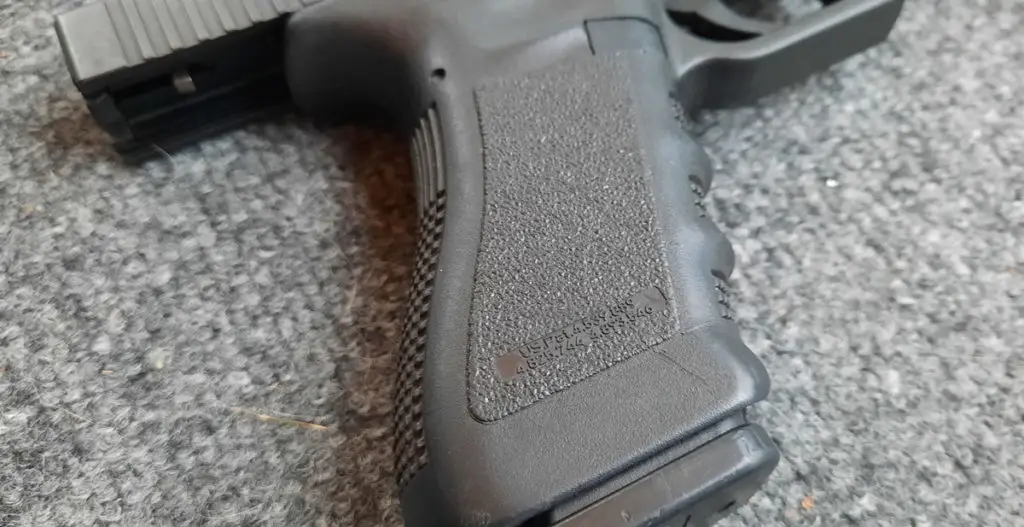
The bottom line is that a firearm is a piece of equipment, same as a holster or a duty belt. Any piece of new equipment can feel different early in the transition period. Regular and repetitious practice and training will almost always cure the awkwardness of using something new, and my transition to the Glock was no exception.
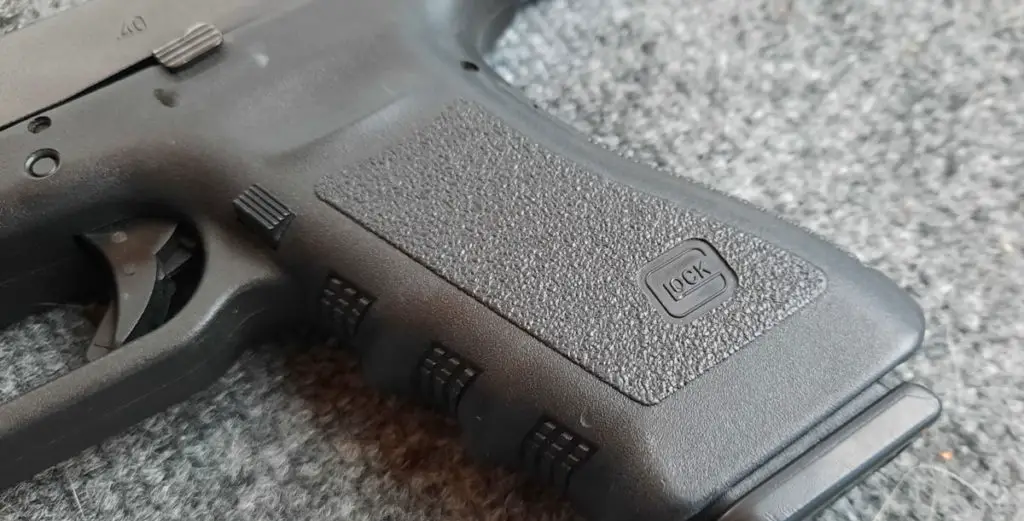
The grip of the gen 3 Glock 22 has a very subtle texture. It is comfortable in the hand, and no so aggressive that it causes any discomfort when shooting for extended periods of time. Both in training and in the field, I have handled the Glock in wet/rainy conditions, with and without gloves. I found the texture of the grip to be sufficient enough to prevent any loss of control or stability.
Sights
There are a few options when it comes to sights on the Glock 22. The standard run-of-the-mill sights on mine are just ok. I also have extensive experience is using the three-dot night sights available from Glock.
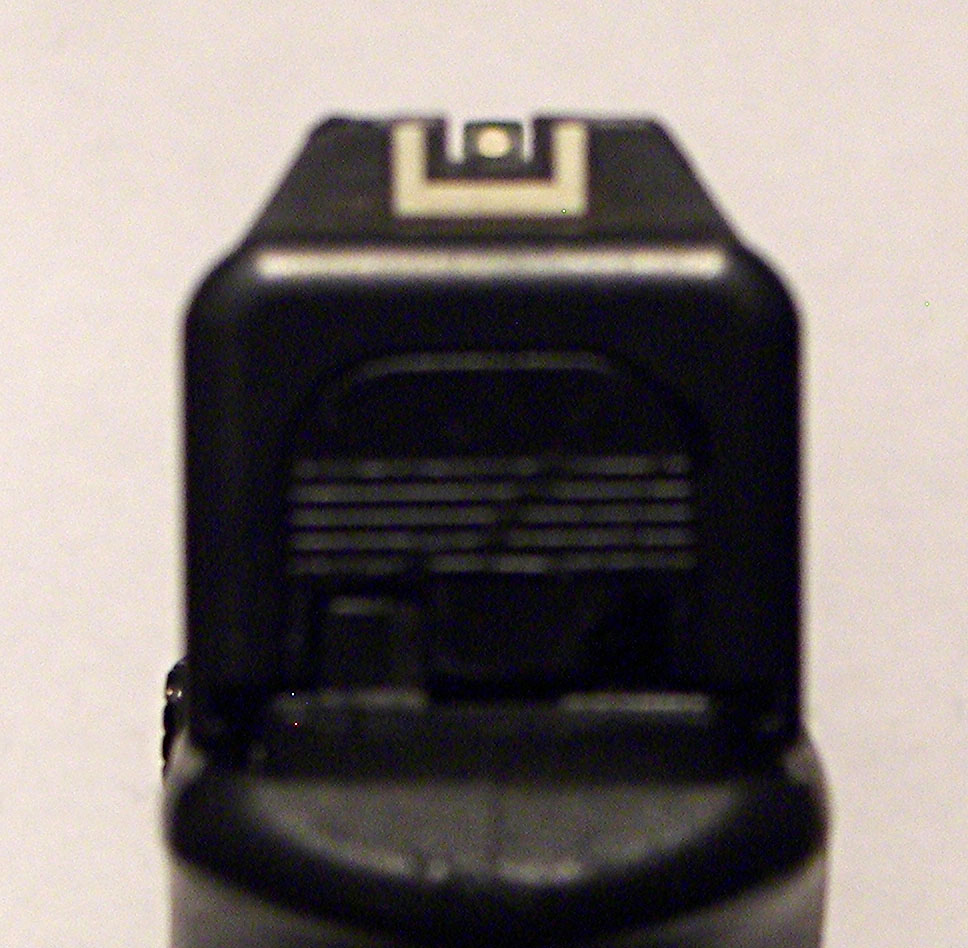
I haven’t noticed any real performance difference between the two, although the glowing night sights are invaluable in low-light conditions. There seems to be and endless number of aftermarket sights available for Glocks, but I don’t really see the need to fix something that isn’t broken.
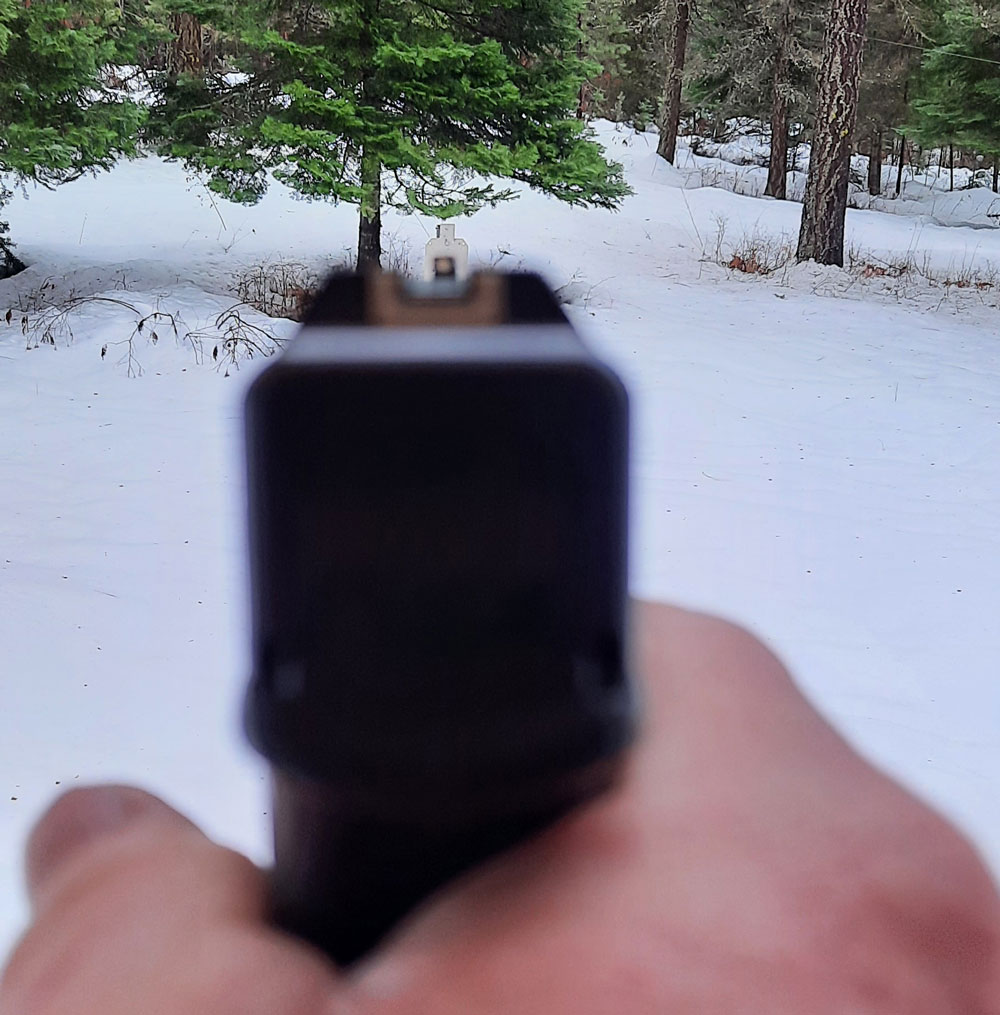
The factory sights are reliable, accurate, and consistent. Again, training/practice = proficiency. With that said, the one concern I have regarding the factory sights has to do mostly with concealed carrying. There is a bit of a sharp edge on both the front and rear sights. They are fairly low profile, but the potential exists for a snag on clothing if a person was in a hurry to draw or holster the Glock.
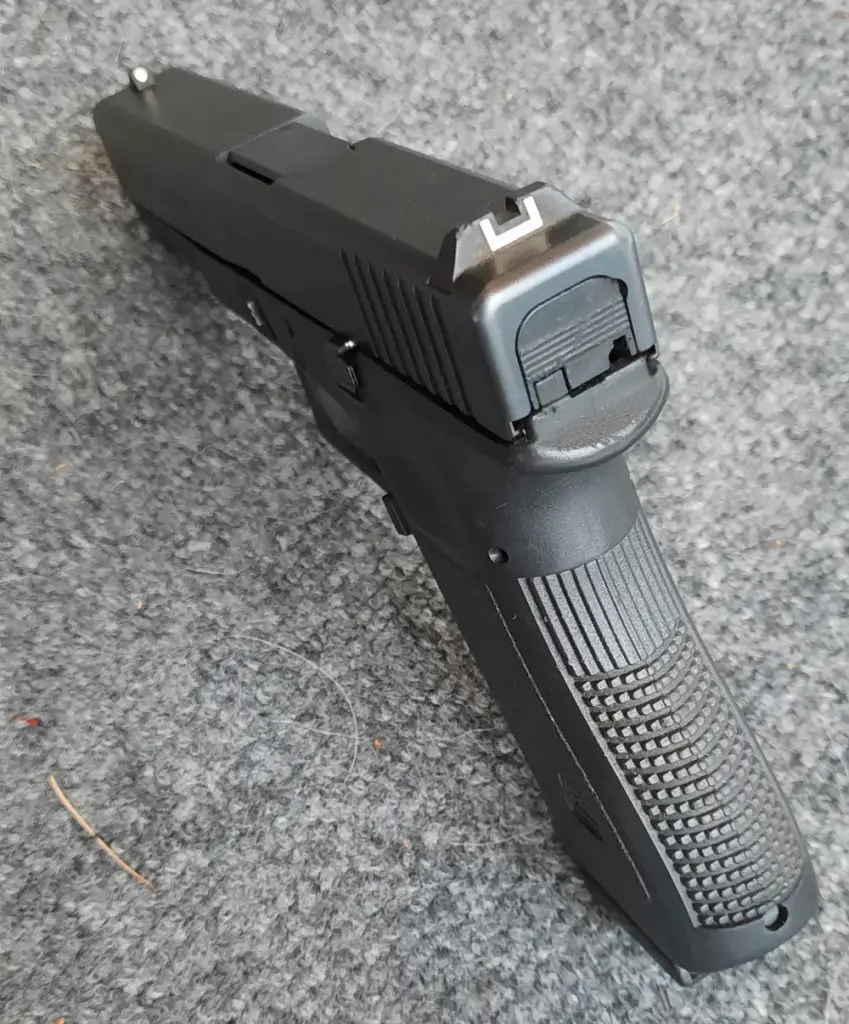
Slide Lock / Magazine Release
Like most firearms, the slide lock and magazine release button are situated on the left side of the frame, intended to be operated by the shooter’s right thumb. The slide lock is positioned above and slightly forward from the magazine release button. For my hand size, the tip of my thumb rests just below the slide lock when I have a shooting grip.
When the slide is locked in the open position, I find that reaching the slide lock is fairly easy for me, although I should add that I have fairly long thumbs. In my experience as a firearm instructor, I have noticed a lot of people have to slightly modify their grip to operate the slide lock. That is not necessarily to say they struggle with it, but there can be a definite need to rotate the shooter’s grip if the tip of the thumb isn’t quite long enough to reach the slide lock.
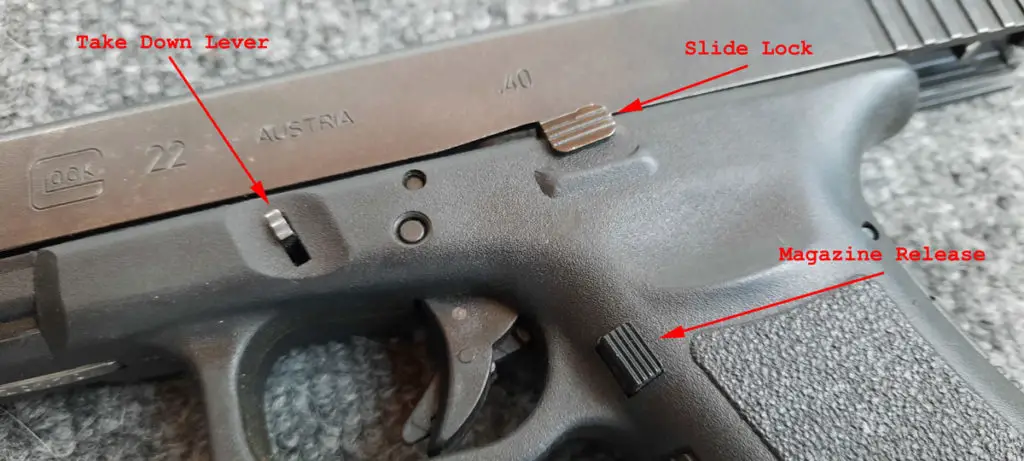
Keep in mind that the slide lock lever isn’t the only way to release the slide from the locked position. The mechanism that causes the slide to lock back is activated by an empty magazine. The shooter can always remove/replace the magazine and then just pull the slide back slightly and simply let go.
There is an argument for not using the slide lock to release the slide after a reload. Pushing the lever down with your thumb seems (and actually is) simple enough in a recreational or training setting. In a high stress, real world setting, manipulating a small lever with the tip of your thumb could prove to be too much of a fine motor skill.
Again, as an instructor, I have always encouraged shooters to get into the practice of pulling the slide back with the support hand and letting go after reloading. This can be done with the whole support hand rather than fingertips, and it also allows the shooter to maintain their shooting grip no matter how long their fingers are. Aftermarket extended slide lock levers are available for shooters who have a hard time reaching it, although I have never used one and can’t speak to how well they work.
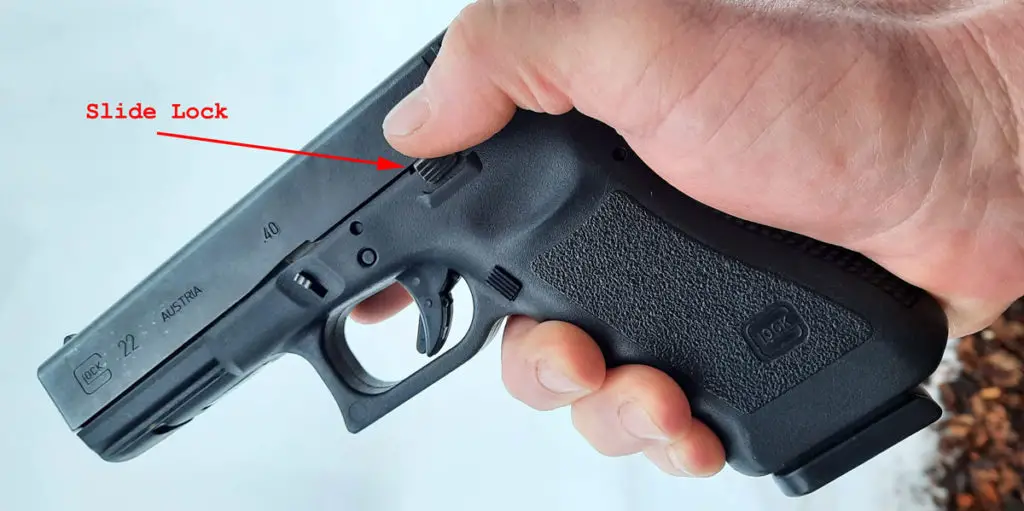
Whether or not it was an intentional feature or a positive design flaw, there is a third way to release the slide after a reload. After a magazine runs dry, the slide will lock back. In the process of reloading with a fresh magazine, if the shooter inserts the new magazine with enough force, the slide will often release itself without the shooter having to do anything. In my experience, this method doesn’t seem reliable enough to count on. It will work better on some guns that others, even within the same model. I always plan to release the slide in a traditional way, and consider it a bonus if the slide releases on its own when I insert the new magazine.
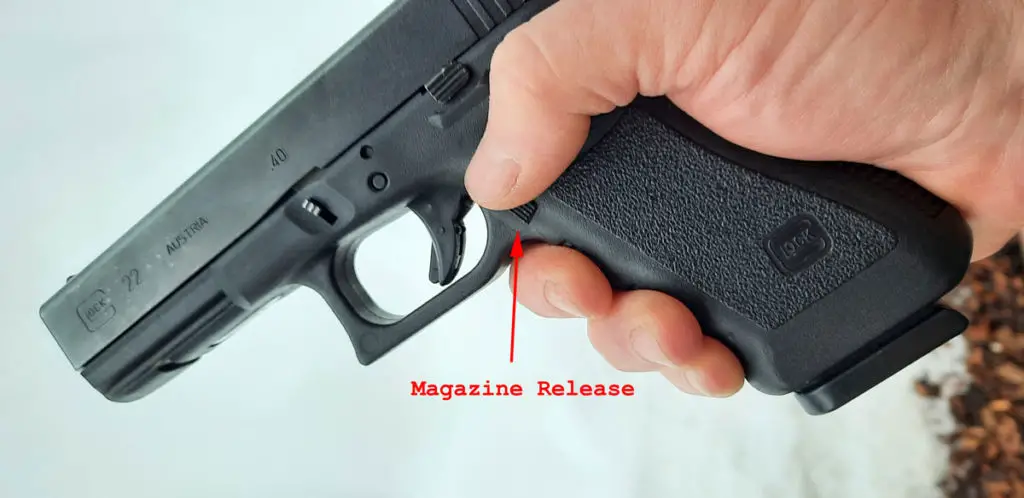
I don’t really have any complaints about the location or function of the magazine release button. It is easily reached and isn’t too hard to push. I have never had an occasion when I unintentionally pushed the button, although I have seen it happen with others once or twice. I have only seen it once or twice in 25 years, so it is such a rare occurrence that I hesitate to even mention it. Just like with the slide lock lever, aftermarket extensions are available, but for me anyway, they seem completely unnecessary.
Glock 22 Trigger
The trigger on the Glock was yet another thing I had to get used to. When Glocks first came out, the triggers were unlike any others I had experienced. Glocks are double-action only. The advantage to this is the trigger pull is the same every time. There is something to be said for consistency.
It is a bit of a sloppy feeling trigger pull, but there is a reason for that. There is no external safety on the Glock, but that’s not to say there is no safety. Internally, Glocks are only at about “half-cock” while at rest, meaning the spring for the internal hammer only has about half of the tension needed to fire the gun. The act of pulling the trigger is what actually what finishes cocking it. As the shooter starts to pull the trigger, more tension is applied to the spring. If the shooter releases the trigger prior to the gun firing, the tension on the spring is also released. If the shooter continued to pull, the trigger releases the internal hammer once full spring tension has been achieved. This feature is what prevents the gun from firing if it is dropped or jarred in any way. Without the trigger being pulled all the way back, there is not enough spring tension to give the firing pin the force it needs to fire.
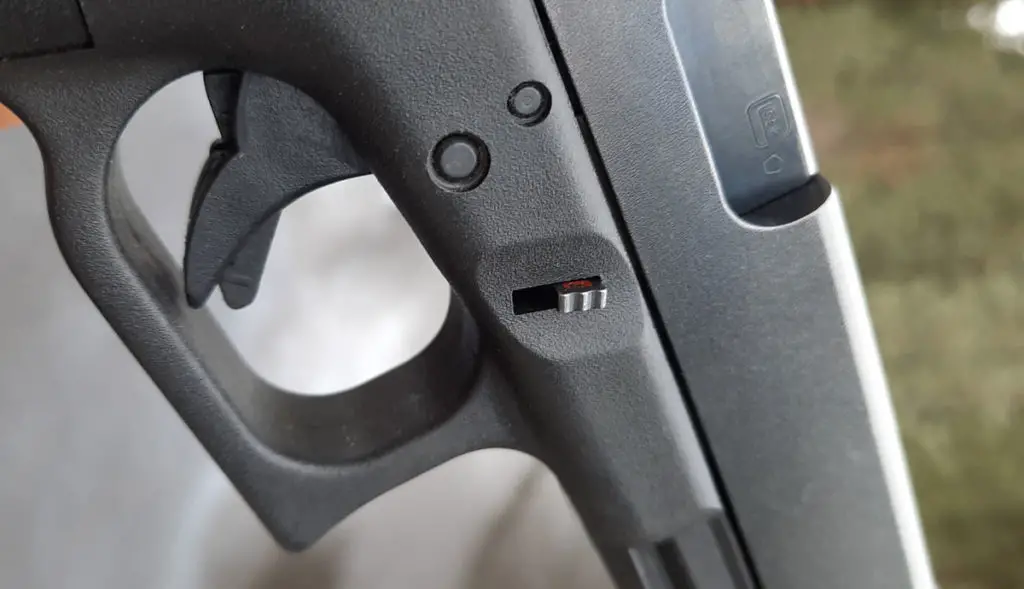
The weight of the trigger pull is about 5.39 pounds, and the trigger travel is approximately ½ inch. There seems to be an apparent consensus that Glocks are prone to accidental discharges because of their light trigger pull. I suppose the trigger pull is light when compared to other double-action pistols. Maybe it’s because I have shot single action semi-autos so much, but I don’t see the Glock trigger as a problem when it comes to accidental/negligent discharges. I know there are plenty of documented incidents (especially in law enforcement) of people unintentionally firing when using the Glock. A lack of training, a failure to familiarize, and bad decisions are the only explanations as far as I’m concerned.
There is a bit of an art to finding the sweet spot in the trigger where the spring tension is present, but the internal hammer is not released. Add stress into the mix, and that fine art goes out the window. The bottom line is that every accidental discharge I’ve ever heard of was because one of the cardinal rules of firearm safety was violated. Keep your finger off of the trigger until you’ve made a conscious decision to fire. Has any instructor in the history of firearms ever suggested it is a good idea to partially squeeze the trigger because you think you might want to fire? The answer is no.
Another aspect of the trigger that is a bit of a fine art is the sear reset. With about ½ inch of trigger travel (one way), each trigger pull requires a total of about 1 inch of movement (pulling the trigger and then releasing it). As a result, if the shooter completely releases the trigger each time they fire, 2 rounds would require 2 inches of movement. This makes the “double-tap” seem more like 2 rounds fired with a lot of moving in between.
The solution is to utilize the sear reset properly. Once the trigger is pulled and the gun fires, the trigger only needs to be released about 1/3 of the way before it can be pulled again. There is a distinct click that can be heard and felt when the reset happens. It saves some time and the economy of movement is greatly increased when a follow-up shot is warranted. This is yet another aspect of the Glock that I found needs a significant amount of practice to master.
Aftermarket triggers are available. They can change the feel of the pull, and increase or decrease the weight of the trigger depending on what your preference is. After all, firearms these days are like Barbie dolls. There is almost no end to the accessories and modifications a person can make to personalize them.
Shooting the G22
When firing the Glock 22, I found it to feel exactly what a .40 S&W was intended to be. It fires crisply right in between the recoil of a 9mm and a .45 ACP. The recoil is there, but it is not overwhelming in my opinion. Once I got a handle on acquiring my sight picture, I experienced a reasonable sight picture recovery after each shot. With practice, I was able deliver follow-up shots relatively quickly and accurately. As I mentioned before, the texture of the grip is sufficient to maintain control of the gun while shooting, but is not too aggressive that it causes any discomfort when shooting for an extended period of time.
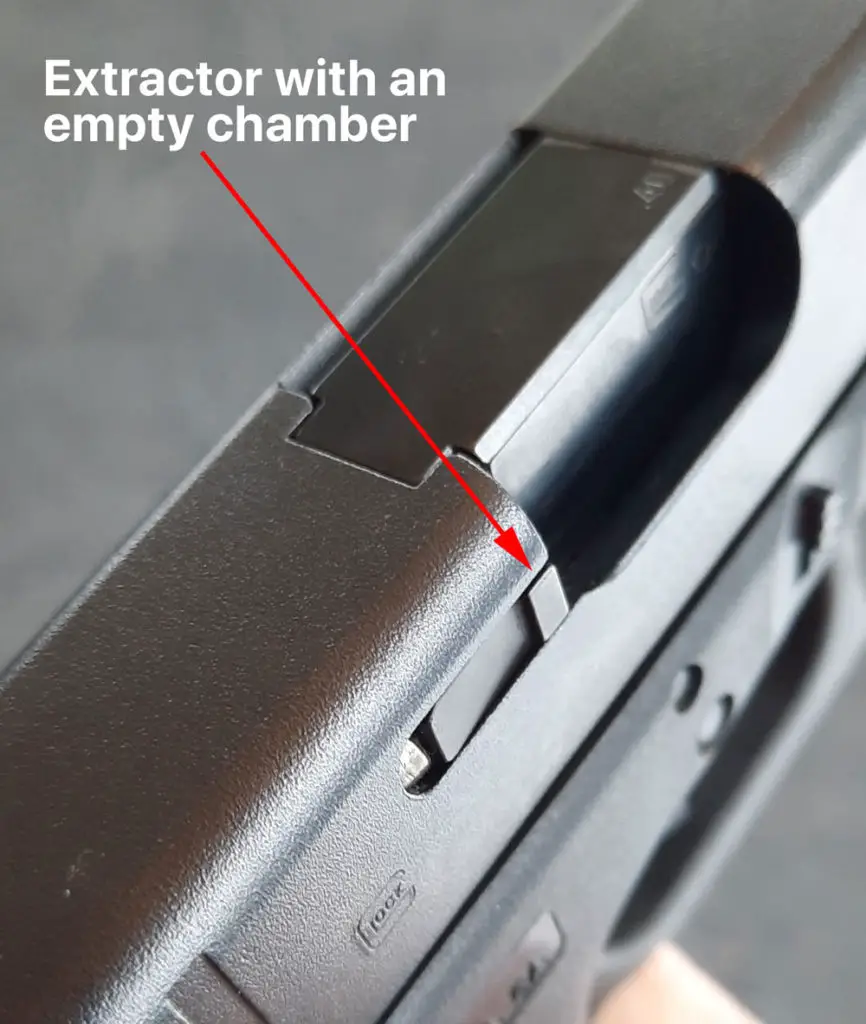
One feature, like most semi-auto’s these days, is the extractor protrudes out slightly when a round is in the chamber. On other pistols I’ve shot, I’ve seen a little bit of paint (usually red) on the top or the end of the extractor that is only visible when a round is in the chamber. The Glock 22 gen 3 does not have this feature, and it’s very difficult to visually see the protrusion.
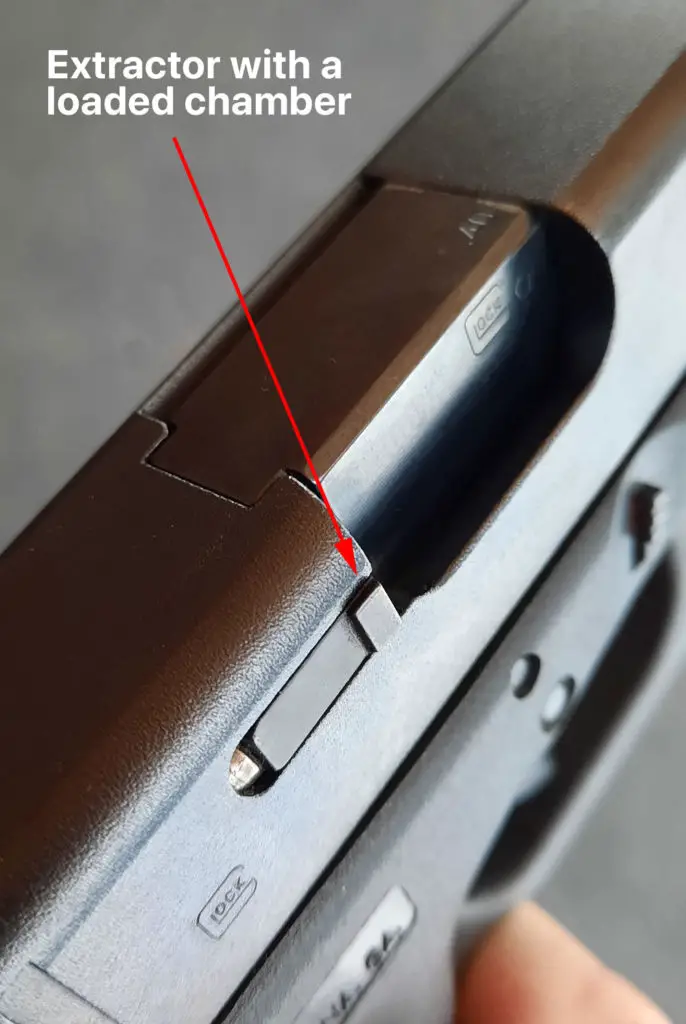
In running my trigger finger across the outside of the extractor I can feel the protrusion more than I can see it. The protrusion is going to happen for the most part anyway with the presence of a round in the chamber, and it’s not necessarily a feature that was designed to be used as an indicator, but it would have been nice to make it a little easier to see.
I suppose a person could add a bit of paint themselves, but I’ve never been a fan of doing that just based on the possibility that the paint interferes with the functionality of the extractor.
Breakdown/Cleaning
Disassembling the Glock 22 is the same as it is for all Glocks. For general purposes of cleaning, there are relatively few parts to disassemble. The first step (obviously) is no ensure the magazine is removed and there is no round in the chamber. We recommend racking the gun several times to mechanically and visually ensure there is no round in the chamber. This is especially important because of the second step, which is to pull the trigger. I personally know a few people who have inadvertently fired a round in the beginning of the cleaning process because they failed to make sure the pistol was unloaded. Two of the people I know who have done this actually shot themselves in the hand because of their failure.
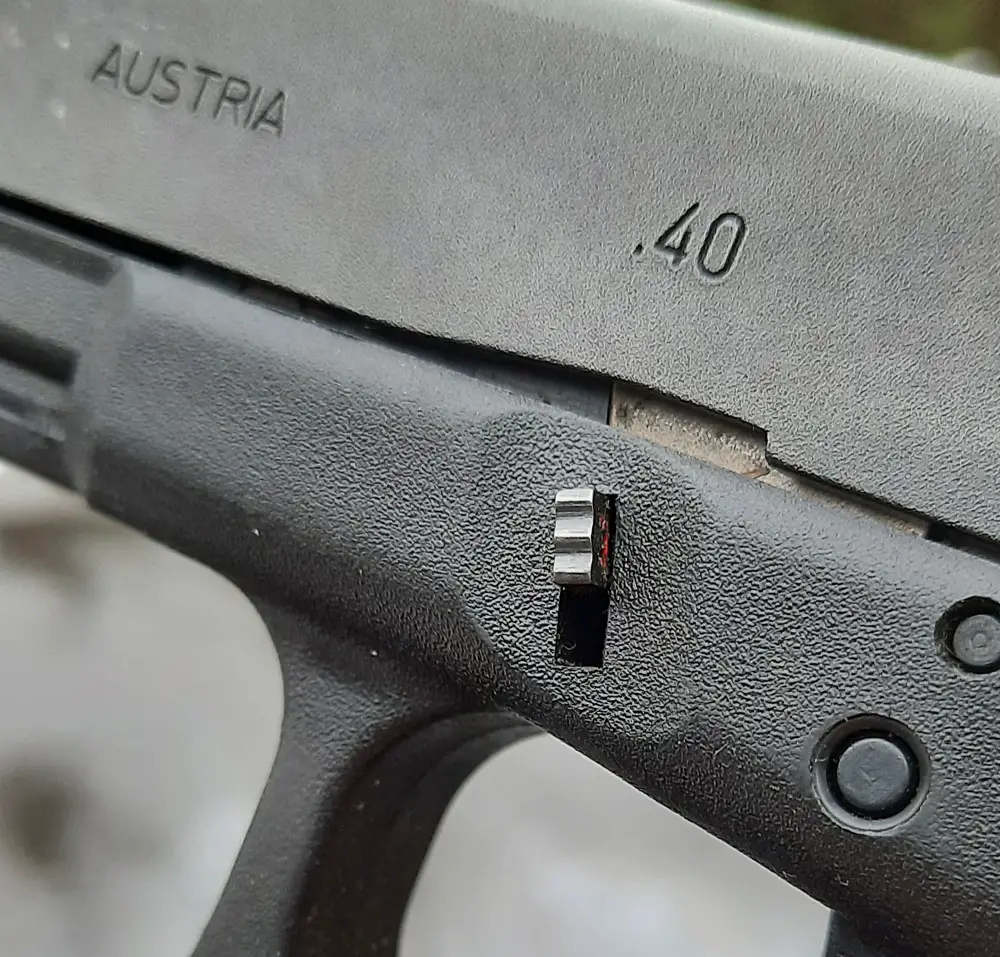
The next step is to only slightly bring the slide back about ¼ inch and hold it. More than once I have moved the slide back too far. If it comes back far enough to reset the internal hammer, you’ll have to start over. While holding the slide back, the two take down levers need to be pushed downward simultaneously. The take down levers are on either side of the frame, just forward from the trigger housing.
While holding the take down levers downward, ease the slide forward and off of the frame. This process takes a little getting used to and can seem awkward. The take down levers are almost recessed into the frame and can be difficult to push down. I suppose the advantage is that there is virtually no way form the take down levers to get pushed down by accident. The gun can be broken down further, but doing so is better left to an armorer.
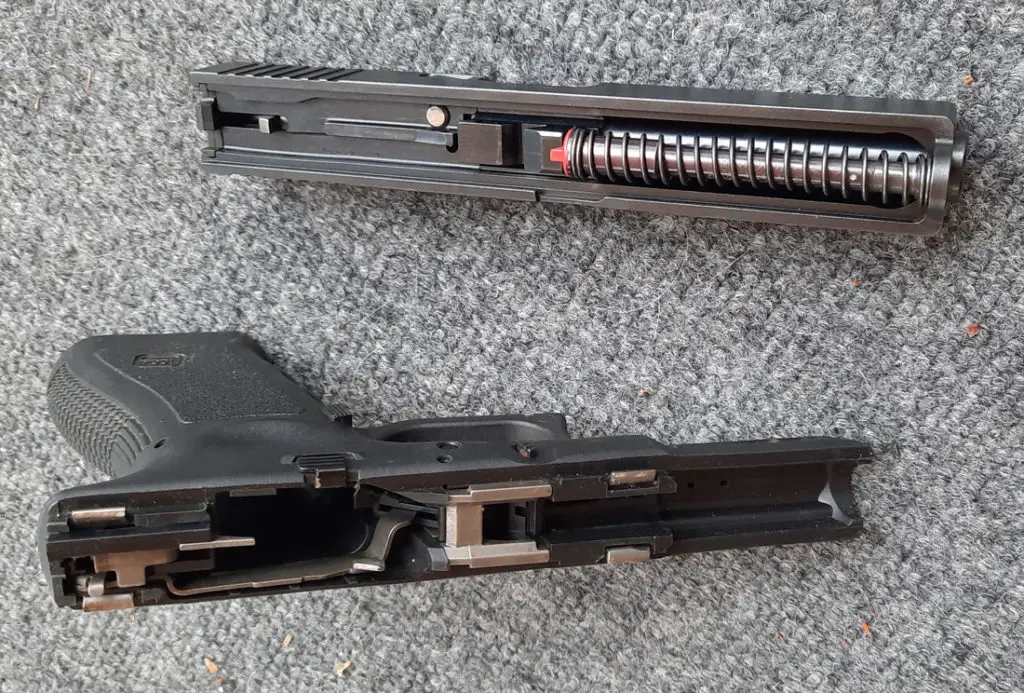
On my Glock 22, I installed a LaserMax laser sight. The switch to activate the laser sight replaces the take down levers. As a result, my take down levers protrude out from the frame somewhat more than the factory take down levers, making it much easier for me to remove the slide.
Once the slide is off, all that is left to do is to remove the recoil spring and take the barrel out of the slide. When the cleaning is completed, the Glock 22 only needs a few drops of oil on the metal pieces that are visible.
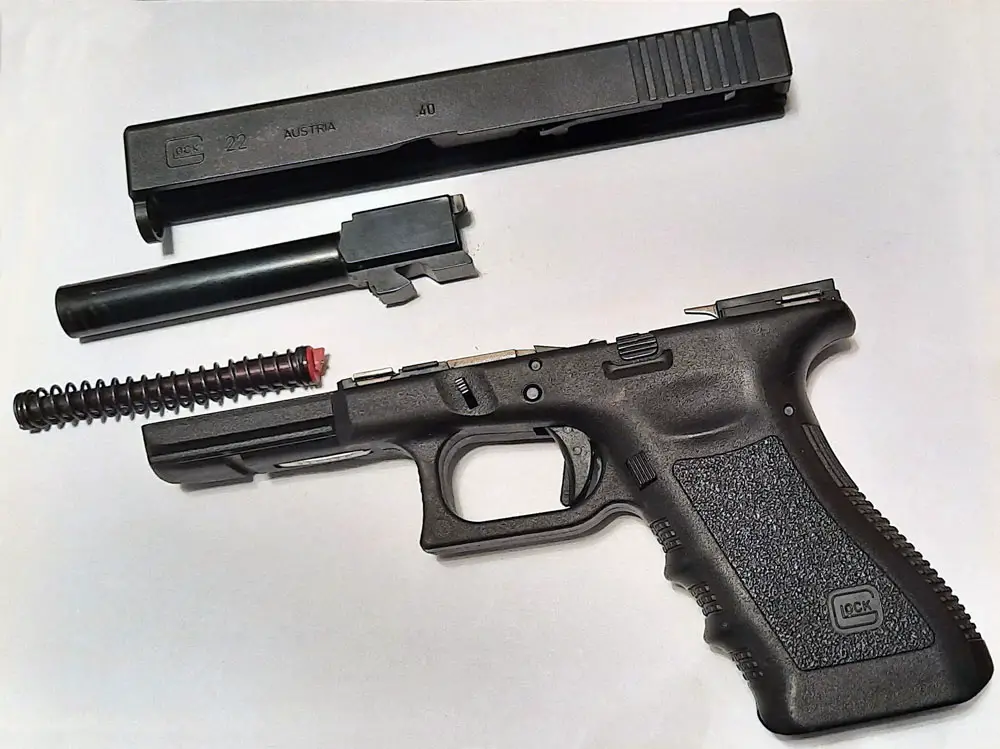
The break down process only needs to be reversed to reassemble the gun. The take down levers are spring loaded to keep them in the “up” position, so when the slide is replaced, there is no need to touch the take down levers. Just put the slide in place and cycle the action.
Conclusion
The Glock 22, being a full framed pistol, is generally a little too bulky to carry concealed for most people, although if a person likes carrying a full framed concealed pistol, then the Glock really isn’t that different than any other gun. In general, I believe the Glock 22 is better suited for exposed/on-duty carrying. Either way, it is lightweight and has relatively few sharp edges.
The caliber of the Glock 22 (.40 S&W) is a very versatile and effective round, suitable for duty use, self/home defense, and recreation. The magazine capacity (15) is definitely respectable (slightly less than a 9mm and generally more than a .45 ACP). For people who live in states that are limiting magazine capacities to 10 rounds, I guess it’s a moot point.
All in all, I consider the Glock 22 very utilitarian. It’s not sleek and sexy, and it does not shoot like a Cadillac, but it is very rugged, reliable, accurate, and reasonably priced. Whether it’s clean, dirty, wet or dry, it’s been my experience that as long as you’re shooting quality ammunition, the Glock 22 will fire and cycle when you pull the trigger. Whatever reason you might have for carrying a firearm, what more could you ask for?
Check Price at:
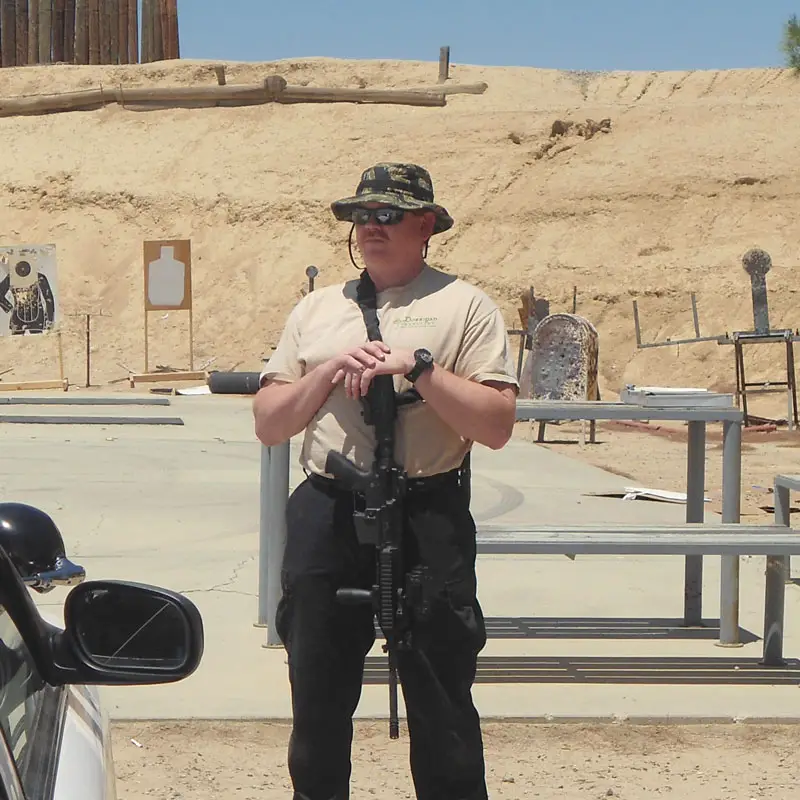
Jonathan started his career as a Police Officer in 2001. In 2010 he was promoted to the rank of Sergeant and became a firearm instructor (rangemaster). He has instructed law enforcement officers in the use of pistols, rifles, shotguns, and submachine guns. Jonathan is a certified armorer for the Colt AR-15/M-16 and for Glock. He served as a Sergeant and Rangemaster until his retirement in 2022.
